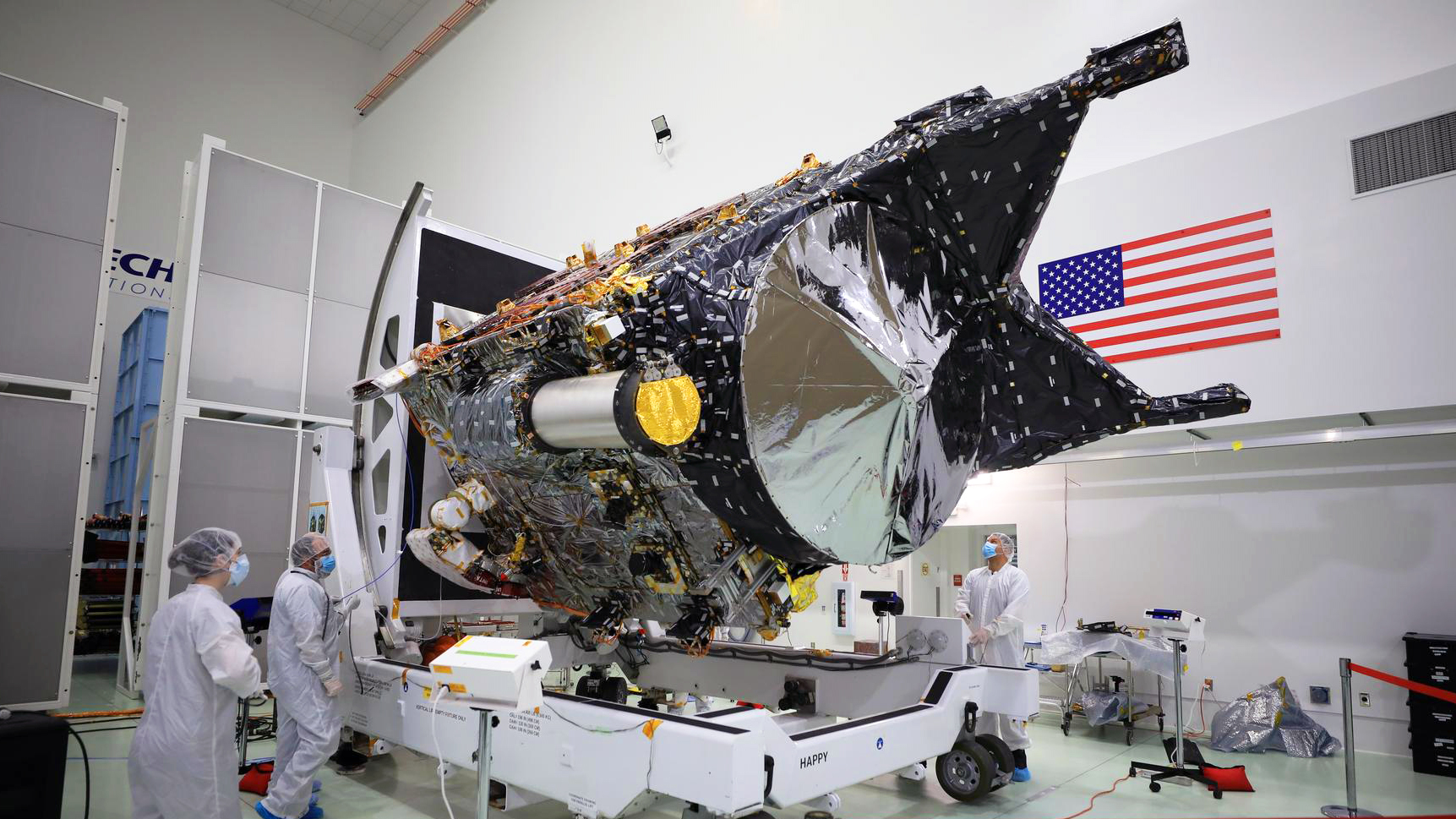A deep space experiment traveling on NASA’s Psyche spacecraft has just beamed a message via laser to Earth from far beyond the Moon for the first time, an achievement that could transform how spacecraft communicate.
In the farthest-ever demonstration of this type of optical communication, the Deep Space Optical Communications (DSOC) beamed a near-infrared laser encoded with test data from its position around 16 million kilometers (10 million miles) away – which is around 40 times farther than the Moon is from Earth – to the Hale Telescope at Caltech’s Palomar Observatory in California.
The DSOC is a two-year tech demonstration riding along on Psyche as it makes its way to its prime target, asteroid Psyche. The demo achieved “first light” on November 14, according to NASA’s Jet Propulsion Laboratory (JPL), which manages both missions, thanks to an incredibly precise maneuver that saw its laser transceiver lock onto JPL’s powerful uplink laser beacon at its Table Mountain Observatory, which allowed the DSOC’s transceiver to aim its downlink laser at Caltech’s observatory 130 kilometers (100 miles) away.
“Achieving first light is one of many critical DSOC milestones in the coming months, paving the way toward higher-data-rate communications capable of sending scientific information, high-definition imagery, and streaming video in support of humanity’s next giant leap: sending humans to Mars,” Trudy Kortes, director of Technology Demonstrations at NASA HQ, said in a statement.
Optical communications have been used to send messages from Earth orbit before, but this is the farthest distance yet by laser beams. In a laser beam, the beam of photons is moving in the same direction at the same wavelength. Laser communication can transmit vast amounts of data at unprecedented speeds by packing data into the oscillations of these light waves, encoding an optical signal that can carry messages to a receiver via infrared (invisible to humans) beams.

You can see the DSOC’s gold-capped flight laser transceiver on Psyche when it was sat in NASA’s Astrotech Space Operations facility back in December 2022.
Image credit: NASA/Ben Smegelsky
NASA usually uses radio waves to communicate with missions farther than the Moon, and both use electromagnetic waves to transmit data, but the advantage of laser beams is that much more data can be packed into much tighter waves. According to NASA, the DSOC tech demo aims to show transmission rates 10-100 times greater than current top radio communication systems.
Allowing the transmission of more data will allow future missions to carry much higher-resolution science instruments as well as allow for faster communications on potential deep space missions – video live streams from the surface of Mars, for example.
“Optical communication is a boon for scientists and researchers who always want more from their space missions, and will enable human exploration of deep space,” said Dr Jason Mitchell, director of the Advanced Communications and Navigation Technologies Division within NASA’s Space Communications and Navigation program. “More data means more discoveries.”
However, there are some challenges to test out first. The farther the distance optical communication has to travel, the more difficult it gets, as it requires pinpoint precision to point the laser beam. Also, the photons’ signal will get fainter, taking longer to reach their destination, eventually creating lag times in communication.
During the test on November 14, the photons took around 50 seconds to travel from Psyche to Earth. By the time Psyche reaches its farthest distance, it will take around 20 minutes for them to travel back – this is long enough for both Earth and the spacecraft to have moved, so the lasers on both need to adjust for this change of position.
So far, the record-breaking technology demonstration has been very successful. “[The] test was the first to fully incorporate the ground assets and flight transceiver, requiring the DSOC and Psyche operations teams to work in tandem,” said Meera Srinivasan, operations lead for DSOC at JPL. “It was a formidable challenge, and we have a lot more work to do, but for a short time, we were able to transmit, receive, and decode some data.”
Or, as Abi Biswas, project technologist for DSOC at JPL put it: “[We] were able to exchange ‘bits of light’ from and to deep space.” Exchanging bits of light to and from deep space could be the game-changing future of how we communicate in space exploration.
Source Link: Earth Just Received A Laser-Beamed Message From 16 Million Kilometers Away